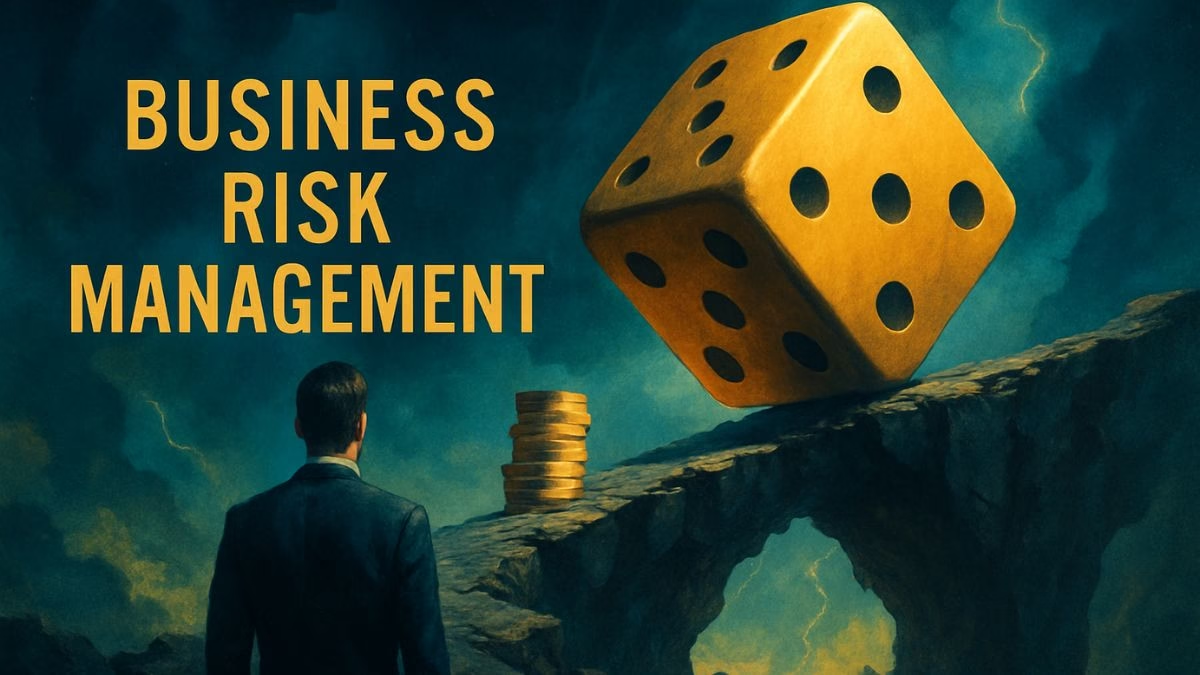Introduction
Welcome to your essential guide and interactive quiz on the vocabulary of Risk Management. In today’s fast-paced business world, understanding and discussing risk is not just for specialists; it’s a crucial skill for professionals in every field. This quiz is more than just a test—it’s a dynamic learning tool designed to immerse you in real-world business scenarios. By engaging with these questions, you will not only learn the precise definitions of key terms but also understand their application in context. The goal is to build your confidence and fluency, enabling you to communicate more effectively about potential threats and opportunities. Taking this quiz will sharpen your vocabulary, enhance your comprehension of business strategy, and empower you to participate in critical conversations about safeguarding your organization’s future.
Learning Quiz
This is a learning quiz from English Plus Podcast, in which, you will be able to learn from your mistakes as much as you will learn from the answers you get right because we have added feedback for every single option in the quiz, and to help you choose the right answer if you’re not sure, there are also hints for every single option for every question. So, there’s learning all around this quiz, you can hardly call it quiz anymore! It’s a learning quiz from English Plus Podcast.
Quiz Takeaways | Mastering the Language of Risk in Business
Hello and welcome. Today, we’re diving into a topic that is absolutely essential in the modern business world: the language of risk management. Now, when you hear “risk management,” you might picture complex charts and financial models, and while those are part of it, the foundation of it all is communication. To manage risk effectively, you must be able to talk about it clearly, precisely, and professionally. That’s what we’re here to focus on—the specific vocabulary that allows you to do just that.
Think of risk as any uncertainty that could affect a company’s objectives. This uncertainty isn’t always negative. Sometimes, taking a calculated risk can lead to great rewards. But whether the potential outcome is positive or negative, it needs to be understood, analyzed, and discussed. The quiz you just took was designed to immerse you in the kind of real-world scenarios where this language is critical. Let’s break down some of the core concepts we explored.
First, let’s talk about the process. A fundamental step in any major business deal, like an acquisition, is due diligence. As we saw in the quiz, this isn’t just a quick look-over. It’s a deep, comprehensive investigation into the financial, legal, and operational health of a company. It’s about uncovering potential liabilities—a term that goes beyond just financial debt. In a business context, a liability can be any disadvantage, like outdated technology or a lack of skilled staff, that could pose a threat to your project or company.
Once risks are identified, the next step is to figure out what to do about them. This is where a crucial verb comes into play: mitigate. To mitigate a risk means to take steps to reduce its potential impact. You can’t always eliminate a risk entirely—you can’t stop currency markets from being volatile, for example—but you can take actions to lessen the blow. A great example of mitigation is diversification. We saw this in the context of a supply chain. By sourcing materials from several different countries, a company diversifies its supply chain to mitigate the risk of a disruption in any one country. The same principle applies to investments.
Now, how do companies protect themselves financially from risks that can’t be completely avoided? This brings us to the concept of indemnification. To indemnify is to compensate for harm or loss. The most common way to do this is through insurance. A company pays a premium for an insurance policy, and if a covered event occurs, the insurance company pays for the losses, after the company has paid its deductible. This indemnifies the company, protecting it from what could be a devastating financial blow.
Of course, some risks are so unexpected and powerful that they can derail everything. In legal contracts, these are often referred to as force majeure events. This French term, meaning “superior force,” refers to unforeseeable circumstances like natural disasters or wars that prevent a party from fulfilling their contractual obligations. On a more operational level, companies create contingency plans for less dramatic but still disruptive events, like a power outage. A contingency plan is your “Plan B,” the specific actions you’ll take to keep things running when the unexpected happens. This is different from a protocol, which is a more rigid, step-by-step set of rules for handling a specific, often recurring, situation, like an IT security incident. Having a clear escalation protocol ensures that problems are addressed by the right people at the right time.
In our increasingly digital world, cybersecurity is one of the biggest areas of risk. A key term here is vulnerability. A vulnerability is a weakness in a system that can be exploited. Think of it as an unlocked door in your house. The company’s failure to update its software in our quiz question created just such a vulnerability. To protect against these, companies use tools like encryption, which scrambles data to make it unreadable to unauthorized parties, and firewalls, which act as barriers to block malicious traffic.
All of these activities need to happen within a structured system. This is where an Enterprise Risk Management (ERM) framework comes in. As the name suggests, this is a company-wide approach. It ensures that every department is identifying, assessing, and managing risk in a consistent way. A core tool within this framework is the risk register, a living document that lists all identified risks, their likelihood (the probability of them happening), their potential impact, and the plans to mitigate them.
Finally, let’s talk about the human element. The attitude towards risk within a company is critical. This is captured by terms like risk appetite and risk tolerance. Risk appetite is the general level of risk a company is willing to accept to achieve its goals. Risk tolerance is more specific—it’s the maximum deviation from that appetite that the organization is willing to accept for a particular risk. For example, a company might have a high appetite for financial risk in its investment strategy, but a very low tolerance for anything that could damage its reputation, like non-compliance with regulations or unethical behavior. When leaders fail to take proper care in their duties, such as ignoring known cybersecurity threats, they can be accused of being negligent.
Mastering this vocabulary is not just an academic exercise. It empowers you. It allows you to move from being a passive observer to an active participant in strategic conversations. It gives you the confidence to ask insightful questions, to understand complex reports, and to contribute to the long-term health and success of your organization. Keep practicing, keep reading, and continue to build your fluency in the essential language of business.










0 Comments